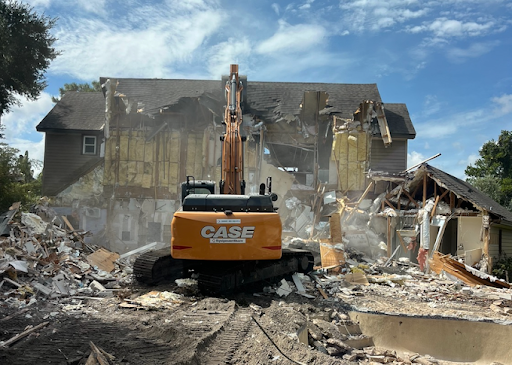If you’re considering renting an excavator, understanding the factors affecting equipment rental prices is crucial. Whether you’re working with a loader, backhoe, or compact excavator, knowing what impacts costs can help you stay on budget. Here’s a breakdown of the key elements to consider when renting heavy equipment for your next project.
Key Takeaways
- The size and type of excavator influence rental costs, with specialized machines like long reach excavators being pricier.
- Renting for extended periods, such as weekly or monthly, often reduces price per day.
- Location, transport, and seasonal demand can impact rental rates due to fuel and logistics costs.
- Attachments like buckets, hammers, and trailers can raise the price, so choose based on project needs.
- Hidden costs, such as insurance and maintenance, can be avoided by thoroughly reviewing your rental agreement.
Key Factors Influencing Excavator Rental Costs
When renting construction equipment, several elements determine the overall cost. Let’s dig into the specifics:
Size and Type of Excavator
The machine size and type are primary cost drivers. For example:
- Mini excavators are affordable and ideal for projects like digging small trenches or working in tight spaces.
- Standard excavators and track excavators offer versatility for medium-scale tasks, such as basement excavation or plumbing trenching.
- Heavy machines, such as Volvo or John Deere long reach excavators, are designed for industrial use like mining and demolition, carrying higher rental costs.
Excavator Rental Costs by Type
| Excavator Type | Daily Rate | Weekly Rate | Monthly Rate |
| Mini Excavators | $200 – $650 | $800 – $2,000 | $2,000 – $5,000 |
| Standard Excavators | $350 – $1,000 | $1,300 – $3,500 | $3,500 – $8,500 |
| Large Excavators | $500 – $1,500 | $1,400 – $5,000 | $4,000 – $14,000 |
Additional Cost Factors
Duration of Rental Period
Daily rentals for heavy equipment can be more expensive than long-term options like weekly or monthly rates. Extended rentals enhance productivity and simplify maintenance scheduling.
Location and Transport
Geographical location influences costs. In areas with high demand or during busy seasons, equipment rental rates may increase. Additionally, fuel, trailer transport, and inventory availability play a role in pricing.
Seasonal Demand
High-demand periods, such as summer construction peaks, often raise price points. Booking early can enable better deals.
Understanding Different Excavator Types
Selecting the right excavator can save time and costs. Here’s an overview:
- Mini Excavators: Compact, lightweight, and excellent for plumbing jobs or ditches.
- Standard Excavators: Versatile construction vehicles for medium projects like site prep or soil removal.
- Large Excavators: Heavy-duty machines for industrial tasks like mining or material handling.
The Role of Rental Companies in Pricing
Brand and Model
Top brands like John Deere, Volvo, and Komatsu may carry premium rental rates due to high demand and reliability.
Maintenance and Support
Ensure the rental includes customer service, security, and engine checks. Quality maintenance minimizes downtime and keeps horsepower consistent.
Insurance and Liability
Understand what’s covered, from damage fees to air compressor warranties.
Impact of Additional Attachments on Rental Prices
Commonly Used Attachments
Adding attachments to your excavator can elevate your project’s efficiency:
- Buckets: Ideal for digging and handling debris.
- Hammers: Break concrete and rocks with ease.
- Augers: Great for ditches or soil drilling.
Cost Implications of Attachments
Adding attachments can increase your rental costs. Here’s a simple breakdown of how much you might expect to pay:
| Attachment Type | Daily Rental Cost | Weekly Rental Cost | Monthly Rental Cost |
| Bucket | $50 – $150 | $200 – $600 | $600 – $1,800 |
| Hammer | $100 – $300 | $400 – $1,200 | $1,200 – $3,600 |
| Auger | $75 – $200 | $300 – $800 | $900 – $2,400 |
Choosing the right attachments can lead to better efficiency on your project, potentially saving you time and labor costs. However, it’s essential to weigh these benefits against the added rental fees. As noted in a cost-benefit analysis, while renting offers lower initial costs, buying can be more economical in the long run if you use the attachment frequently.
Evaluating Rental Agreements and Hidden Costs
Rental Terms
Clarify policies on fuel, transport, and potential late return penalties.
Hidden Fees
Check for charges related to customer service, delivery, or excess debris disposal.
Negotiating Rates
Ask for bulk equipment rental discounts, especially for aerial work platforms, forklifts, or other tools.
Comparing Short-Term and Long-Term Rentals
When deciding between short-term and long-term excavator rentals, it’s important to weigh the pros and cons of each option. Long-term rentals generally offer better daily rates than short-term ones. Here’s a breakdown of the key differences:
Benefits of Short-Term Rentals
- Flexibility: Ideal for quick projects or unexpected needs.
- Lower Commitment: No long-term obligations, making it easier to adjust plans.
- Immediate Availability: Often easier to find equipment on short notice.
Advantages of Long-Term Rentals
- Cost Savings: Longer rental periods usually come with discounted rates.
- Consistent Equipment: You can use the same machine for the entire project, ensuring familiarity and efficiency.
- Reduced Hassle: Less frequent paperwork and logistics involved in changing equipment.
| Rental Type | Daily Rate | Weekly Rate | Monthly Rate |
| Short-Term | Higher | Moderate | N/A |
| Long-Term | Lower | Lower | Best Value |
In conclusion, the choice between short-term and long-term rentals depends on your project’s specific needs and budget. Assessing these factors will help you make the best decision for your excavator rental.
How Market Trends Affect Excavator Rental Prices
Understanding how market trends influence excavator rental prices is essential for anyone looking to rent this heavy machinery. As market conditions shift, so do rental rates. Economic indicators such as construction project pipelines, government infrastructure spending, and material costs can all play a significant role in determining the price you pay.
Technological Advancements
- New technologies can lead to more efficient excavators, which may increase rental costs due to higher demand for the latest models.
- Companies that invest in modern equipment often charge more, reflecting the value of advanced features.
- Keeping up with technology can also mean better fuel efficiency, which can save money in the long run.
Economic Factors
- Inflation: Rising costs of materials and labor can lead to higher rental prices.
- Supply and Demand: When construction projects surge, the demand for excavators increases, often driving up rental rates.
- Market Competition: More rental companies in an area can lead to competitive pricing, benefiting renters.
Industry Demand
- Seasonal trends can affect availability and pricing. For example, during peak construction seasons, rental prices may rise due to increased demand.
- Understanding local market conditions can help you anticipate price changes and plan your rental accordingly.
In summary, being aware of these market trends can help you make informed decisions when renting an excavator, ensuring you get the best value for your project needs.
By understanding these factors, you can make a more informed decision when renting an excavator with attachments. This knowledge can help you manage your excavator rental rates effectively and avoid unexpected costs.
If you’re looking to kickstart your construction project, visit our website today! At Samuel’s Site Service, we specialize in land clearing, grading, and concrete services in DeBary, FL. Let us help you prepare your site for success! Call us at (407) 562-8033 for FREE quote.
















